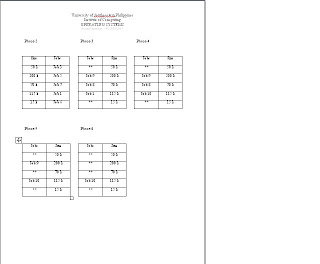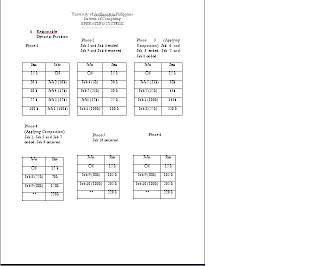What conveniences does the Ship Partner information system provide to passengers of the Queen Mary 2? What entertainment services could be made available to passengers through this digital network?
One of the convenient service that the ship partner information system provides is the through the plastic bar-coded card which is already given to the passengers in checking in and those cards will serve as the medium in working with “The Ship Partner” information system and its internet connection. Through this plastic bar-coded card, the Queen Mary 2 passengers do not have to carry money. Example, they can use the plastic bar-code information system in buying what they want around the ship, watching movies in theater, telephones services and many others. Also, through an internet connection they can surf and check their accounts in the internet.
The entertainment services such as on-demand movies and interactive television are some of the digital network could be made available to passengers.
How does the Ship Partner information system assist ship managers with their duties and responsibilities?
The one considered most valuable to the crew and management and key to the functioning of the vessel is the integrated network and information system accessible in every cabin. Ship managers can run reports showing which passengers are on board, how many will be attending the morning exercise class, and which entrée was most popular at last night’s dinner.
3. How does the Ship Partner information system assist Cunard in competing in the travel industry? What other travel & leisure industries would benefit from a system like The Ship Partner?
The Ship Partner information system assists Cunard in competing in the travel industry through the services it offers to the customers in a way that the customers will feel more convenient than other travel industry. It also assists in tracking security, billing, telephone services, onboard television and other services.
The Ship Partner could also benefit other industries like hotels, restaurants and resorts wherein it could them a lot in servicing their customers.
4. Why is it important for the Ship Partner to have a backup system? How would a system wide failure affect the functioning of the ship?
It is important to have a back-up system so that the files and important information will be recovered even if the main system fails to give the services that the customer needs and also to trace the past events in the system. If a system fails, then, all of the transaction and processes in the ship will be paralyzed but it depends on the type of failure because the transactions depends on the system.
Wednesday, December 14, 2011
Tuesday, April 5, 2011
Case Study #6

Name: Willy T. Pedroso
Section: BSIT 3 Day
Case Study #: 6
A process can be thought of as a program in execution. A process will need
certain resources — such as CPU time, memory, files, and I/O devices — to
accomplish its task. These resources are allocated to the process either when it is
created, or while it is executing.
As a process executes, it changes state. The state of a process is defined in
part by the current activity of that process. Each process may be in one of the
following states:
New State: The process being created.
Running State: A process is said to be running if it has the CPU, that is,
process actually using the CPU at that particular instant.
Blocked (or waiting) State: A process is said to be blocked if it is waiting
for some event to happen such that as an I/O completion before it can
proceed. Note that a process is unable to run until some external event
happens.
Ready State: A process is said to be ready if it is waiting to be assigned to a
processor.
Terminated state: The process has finished execution.
Logically, the 'Running' and 'Ready' states are similar. In both cases the process is
willing to run, only in the case of 'Ready' state, there is temporarily no CPU
available for it. The 'Blocked' state is different from the 'Running' and 'Ready'
states in that the process cannot run, even if the CPU is available.
From the READY state to the WAITING state.
A job in the WAITING state is waiting for peripheral device response which must be received before the CPU can effectively be used again. A process in the READY queue is ready in all aspects to make effective use of the CPU. If a job in the READY state cannot proceed because a required device fails, it should be sent back to the HOLD state, not the WAITING state.
From the WAITING state to the RUNNING state.
The Process Scheduler selects processes from the READY state for the CPU. Bypassing the READY queue would make process management impossible.
Monday, January 10, 2011
Subscribe to:
Comments (Atom)









